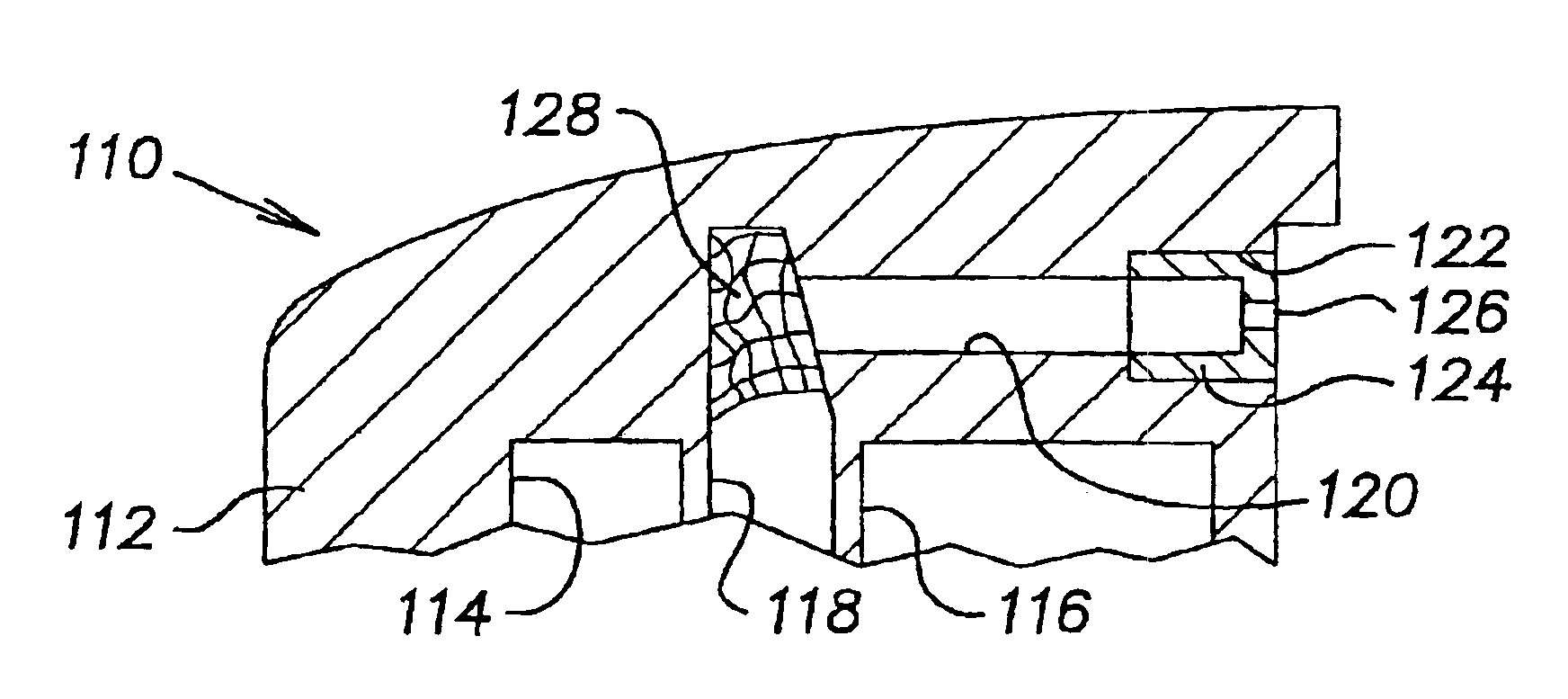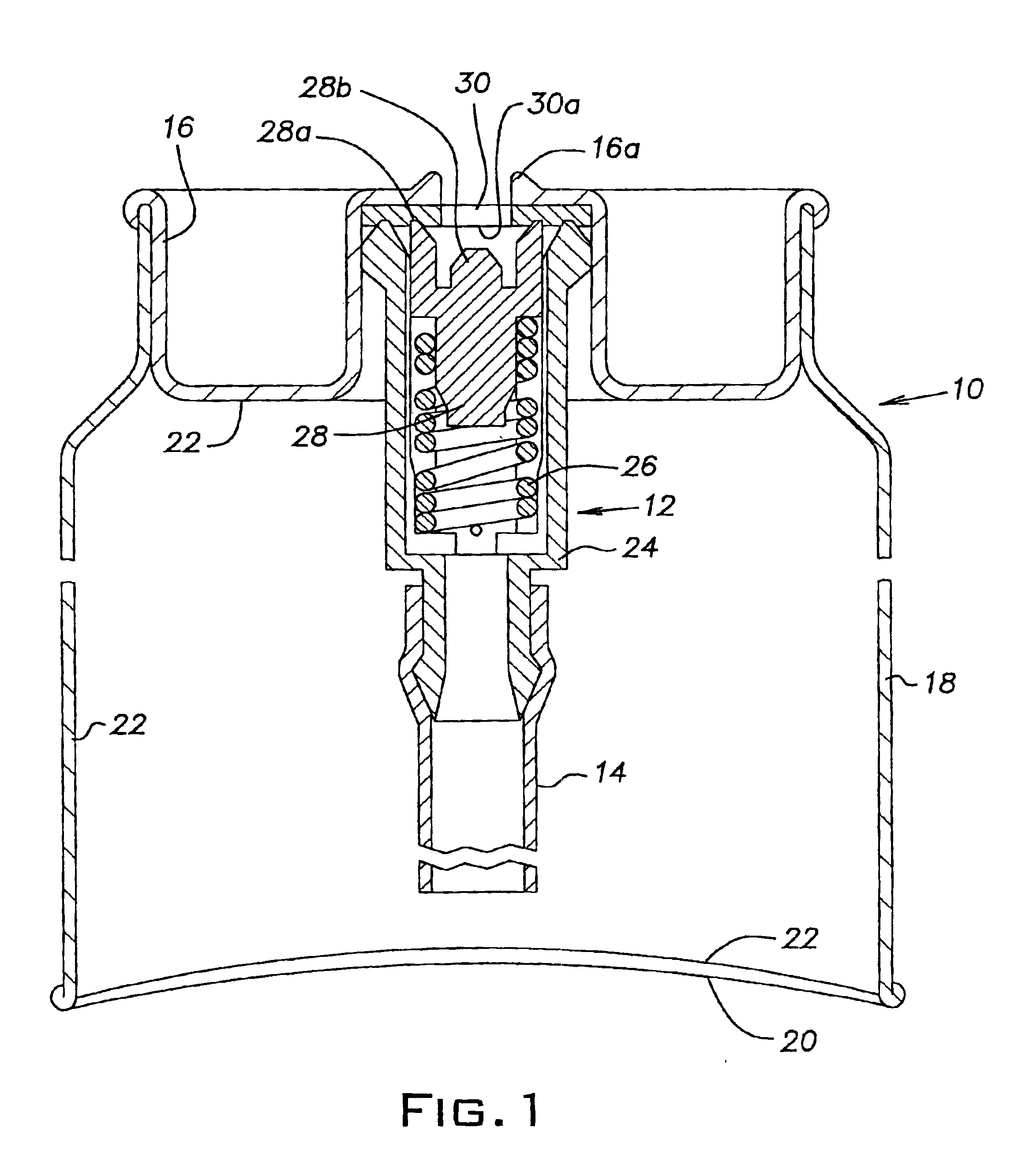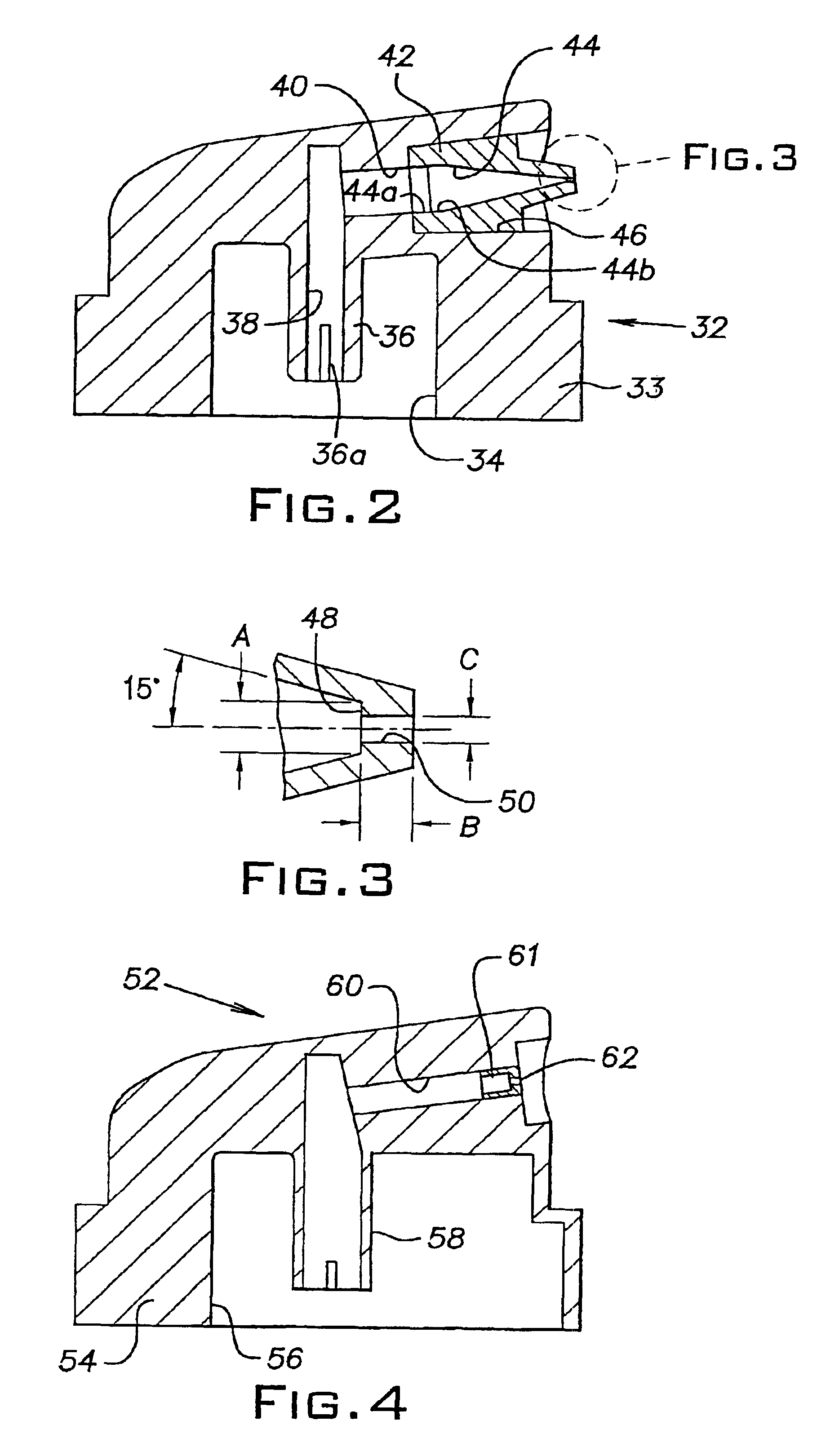Apparatus and method for dispensing vapocoolants
- Summary
- Abstract
- Description
- Claims
- Application Information
AI Technical Summary
Benefits of technology
Problems solved by technology
Method used
Image
Examples
Example
DETAILED DESCRIPTION OF THE DRAWINGS
Referring to FIG. 1, a container 10 includes internally mounted co-acting valve apparatus 12 having a dip tube 14. The container 10 comprises a hermetically sealed metal can including an upper mounting cup 16, a side wall 18 and a bottom wall 20. The side wall 18 is secured to the upper cup 16 and bottom wall 20 in a fluid-tight rolled joint.
The interior surfaces of the container 10 may be provided with a protective polymeric coating or film 22. As noted above, a polyamide / polyimide (PAM) resin may be used on aluminum, and an epoxy / phenolic resin may be used on steel, but an unlined container is preferred.
The container 10 is sized to hold about 3.5 ounces of vapocoolant. However, containers may be sized to hold from about 1 ounce to about 10 ounces. The cross-sectional area of the container is selected to assure development of a vapor pressure sufficient to discharge the contents of the container.
The valve apparatus 12 includes a valve body 24 hav...
PUM
 Login to View More
Login to View More Abstract
Description
Claims
Application Information
 Login to View More
Login to View More - R&D
- Intellectual Property
- Life Sciences
- Materials
- Tech Scout
- Unparalleled Data Quality
- Higher Quality Content
- 60% Fewer Hallucinations
Browse by: Latest US Patents, China's latest patents, Technical Efficacy Thesaurus, Application Domain, Technology Topic, Popular Technical Reports.
© 2025 PatSnap. All rights reserved.Legal|Privacy policy|Modern Slavery Act Transparency Statement|Sitemap|About US| Contact US: help@patsnap.com



